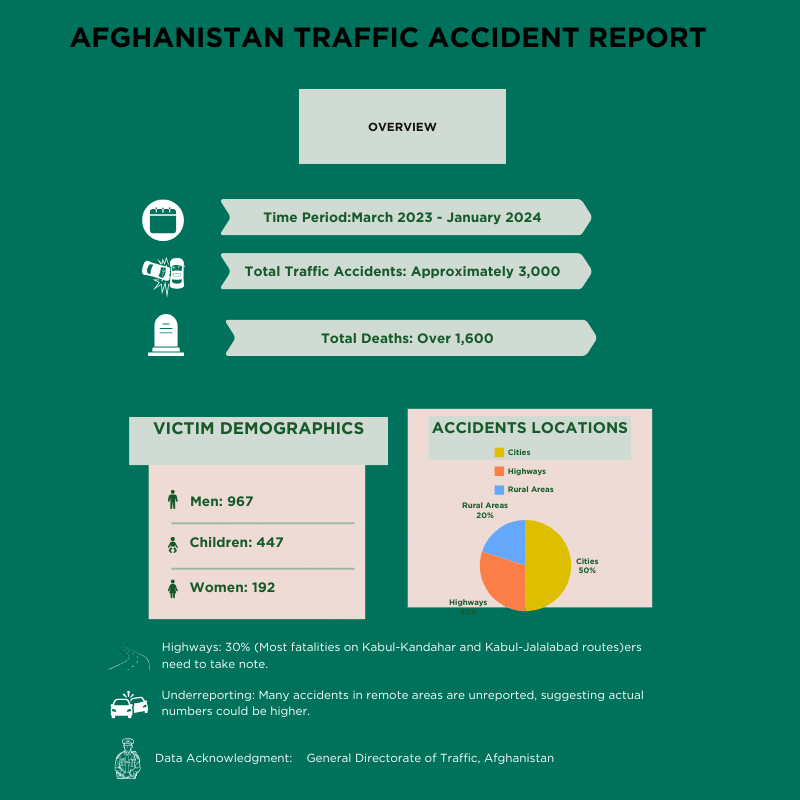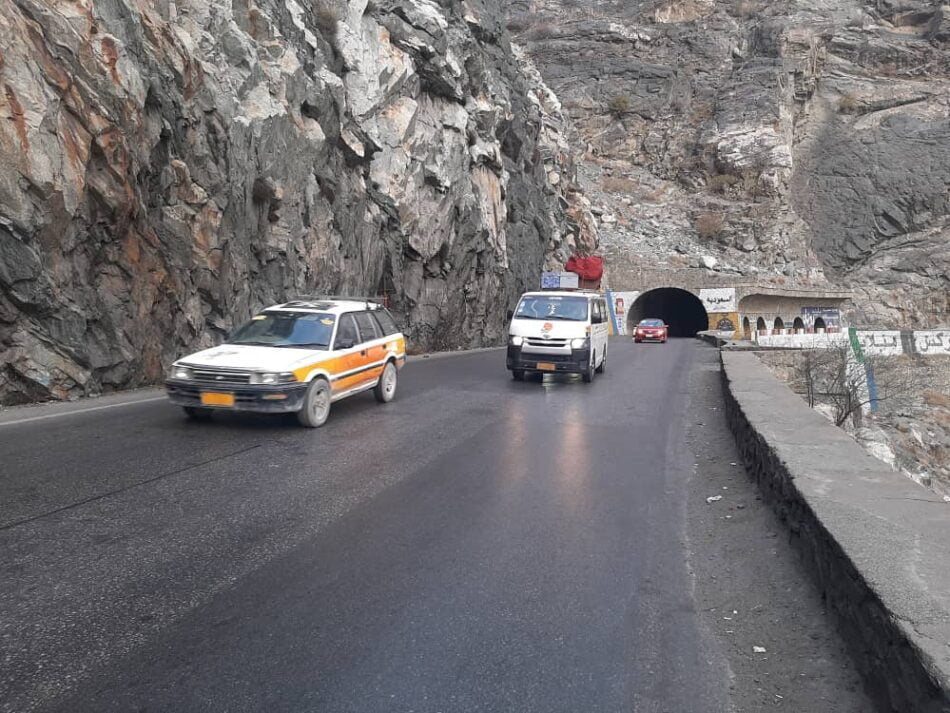Afghanistan has recorded approximately 3,000 traffic accidents this year, resulting in over 1,600 deaths. These figures come from the General Directorate of Traffic in Afghanistan, which operates within the country’s Ministry of Interior. The data covers ten months, from March 2023 to January 2024.
“More than 1,600 individuals have lost their lives in traffic accidents in Afghanistan over the last ten months,” stated Abdul Wadud Khairkhah, director of planning and policy of the Taliban government’s General Directorate, in an interview with Tolo News, a private television station. He confirmed that the casualties included 967 men, 192 women, and 447 children.
The official numbers likely underestimate the true toll, as many accidents in remote areas of Afghanistan go unreported. However, based on recorded incidents, a traffic accident occurs approximately every two hours in the country, and an Afghan dies on the road every five hours.

Afghanistan’s Most Dangerous Roads
Traffic authorities indicate that roughly half of the accidents happen in cities, with 30% on highways and 20% in rural areas. Highways see the greatest number of fatalities, particularly the Kabul-Kandahar and Kabul-Jalalabad routes. Rural roads connecting provincial capitals to districts are also the sites of deadly accidents.
While there has been significant international investment aimed at standardizing Afghanistan’s highways and roads, widespread corruption has plagued these projects. As a result, key roads remain inadequate and some are barely passable despite repairs.

Understanding the Causes
Afghan traffic officials cite the lack of a standard highway system as the leading cause of accidents. Abdul Wadud Khairkhah explained, “Our highways are not built to transit standards. Safety principles have not been considered. These are substandard roads connecting provinces or between provinces and districts.”
Additional factors contributing to the high accident rate include:
- Lack of traffic signs on highways
- Driver disregard for traffic laws, including speeding and maintaining safe distances
- Insufficient traffic police presence
- Crowded roadways with diverse vehicles (cars, motorcycles, trucks, rickshaws, etc.)
- Incompetent and careless drivers
- Drunk driving
- Old and left-hand drive vehicles
- Competition between drivers
The absence of a well-functioning traffic system, limited enforcement of traffic laws, and a shortage of professional traffic police have created hazardous road conditions.
Global Context
According to the World Health Organization, an estimated 1.19 million people worldwide die in traffic accidents annually. Road traffic crashes are most common in low- and middle-income countries, which also have the most fatalities. These crashes are expensive, costing countries 3% of their GDP. There are several risk factors for road traffic injuries, including speeding, driving under the influence, and not wearing seatbelts or helmets. Additionally, poorly designed roads and unsafe vehicles contribute to crashes. Efforts to reduce road traffic injuries include improved enforcement of traffic laws, designing safer roads, and educating the public.
Afghanistan has a disproportionately high rate of traffic-related deaths, despite a large portion of the population living in rural areas with limited vehicle travel. This is likely due to the factors mentioned above, such as the lack of a standard highway system, poor road conditions, and disregard for traffic laws.





